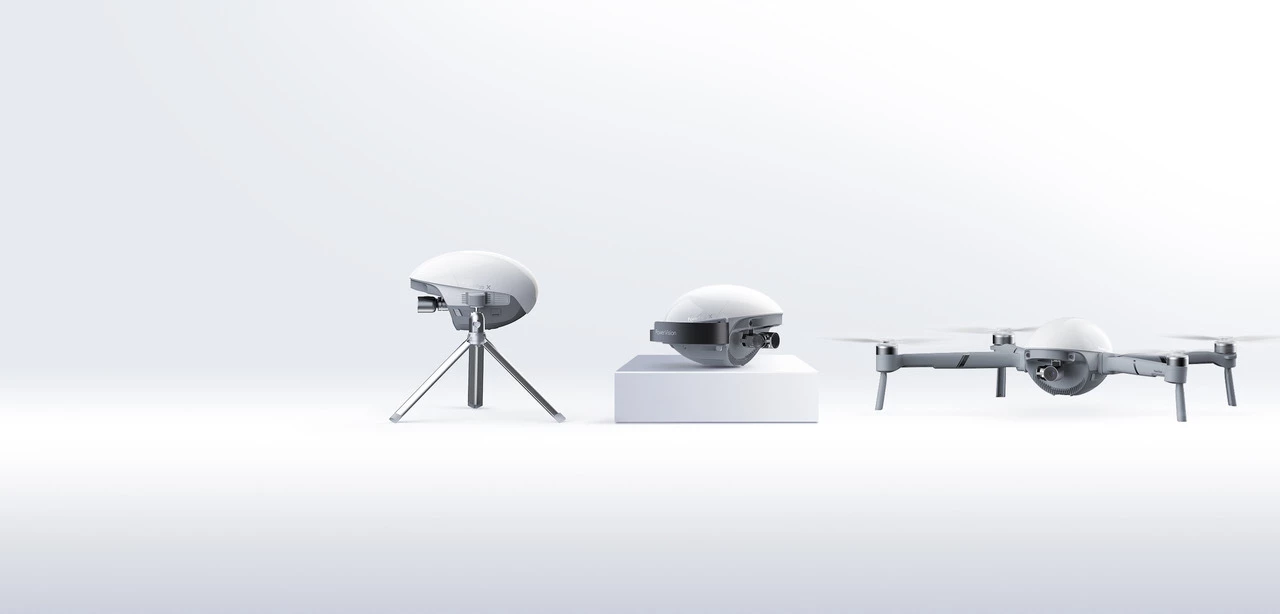After catching our eye with the peculiarly shaped PowerEgg drone in 2016, PowerVision has returned to drop another nicely rounded aircraft into the mix. While aerial captures are part of the brief for the PowerEgg X, the company is also keen to emphasize its capabilities as a portable AI-powered camera that can keep objects of interest perfectly framed.
The camera aboard the PowerEgg X can capture 4K video at 60 fps and is mounted to a three-axis gimbal to keep the vision smooth. PowerVision hasn’t offered specs in terms of still photography just yet, only to say that it guarantees “superior, high-quality pictures.”
These capabilities can be put to use as a stationary camera, with PowerEgg X stood atop a flat surface with support from a small attachable tripod. PowerVision says the artificial intelligence built into the device enables it to recognize and track faces within a 170-degree field of view, and adjust its framing to keep them in the center of the picture. Video and photo captures can be triggered by gesture controls.
If users want to take matters into their own hands, the PowerEgg X can be used as a stabilized video camera much like DJI’s Osmo. In this handheld gimbal camera mode, the battery should last for three and half hours, while the three-axis gimbal again helps to keep the captures smooth.
In drone mode, the PowerEgg X is said to have a battery life and flight time of 30 minutes and can withstand winds of up to 38 knots (70 km/h or 43 mph). It also offers obstacle avoidance and a “SyncVoice” feature, enabling users to narrate their videos in real-time with the audio automatically layered over the top of their captures. The companion smartphone app then allows short videos to be cut together and shared over social media.
The PowerEgg X is packaged inside an IPX6-rated waterproof casing and PowerVision will be showing off this particular feature by stationing the camera drone beneath a waterfall at this week’s CES in Las Vegas, if you happen to be in the area. It will on sale from January 7, with a price tag of US$899.
Source: PowerVision via BusinessWire




